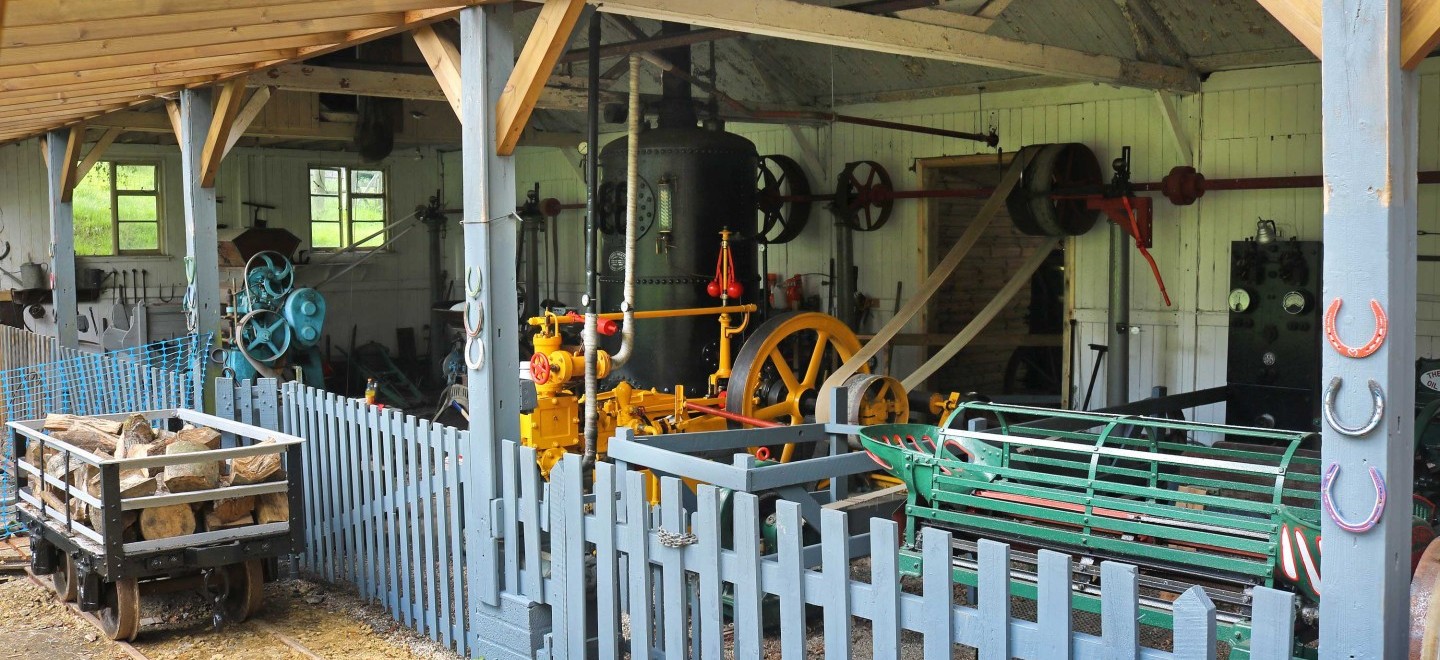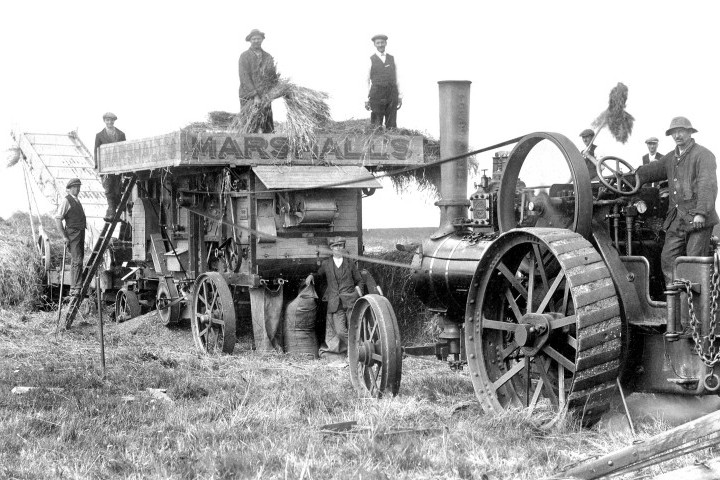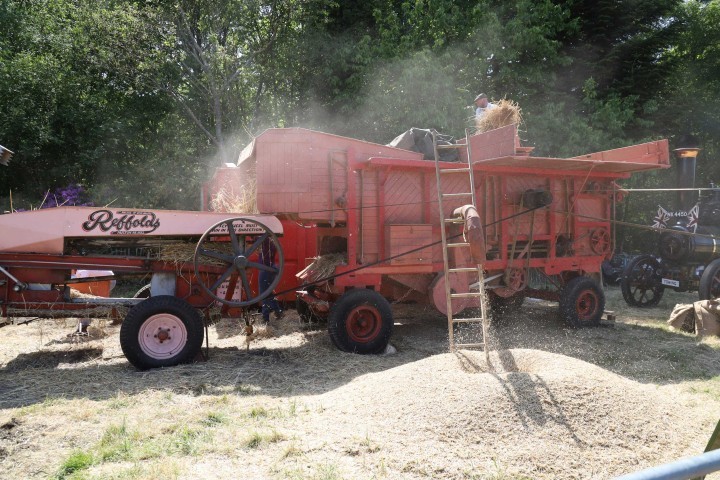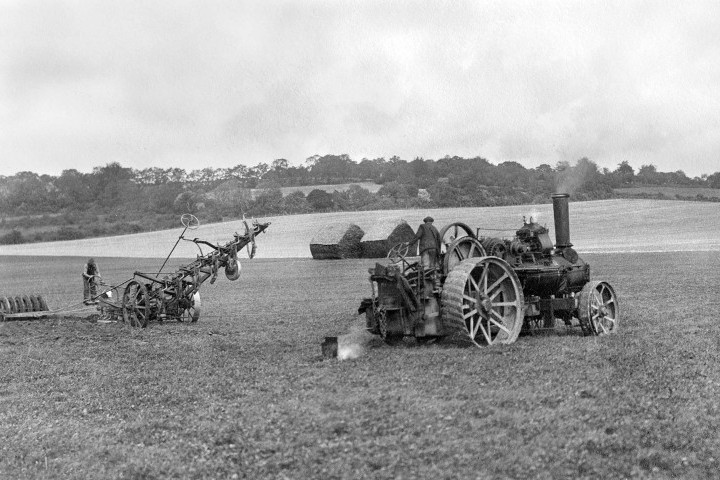Farming with Steam
The application of steam to agriculture spurred on change in the countryside right from the early 1800s.
Mainly used for driving threshing
machines, to separate grain from
the stalks, and land cultivation,
mechanisation was not liked by farm
workers and riots ensued. However,
progress was inevitable, as was the loss
of jobs, which led to an exodus of people
from the countryside to the new factories
in cities.
You can see a variety of farm machinery
and agricultural traction engines at
Hollycombe. The open barn contains
many examples found on a farm,
including a butter churn, a cider press,
corn mill, root cutter and clover huller.
These are driven by belting from line-
shafting – a typical way of driving several
devices from one engine.




